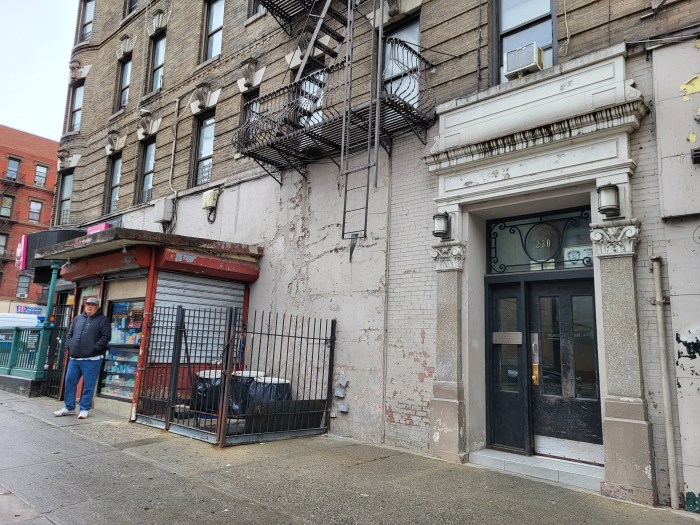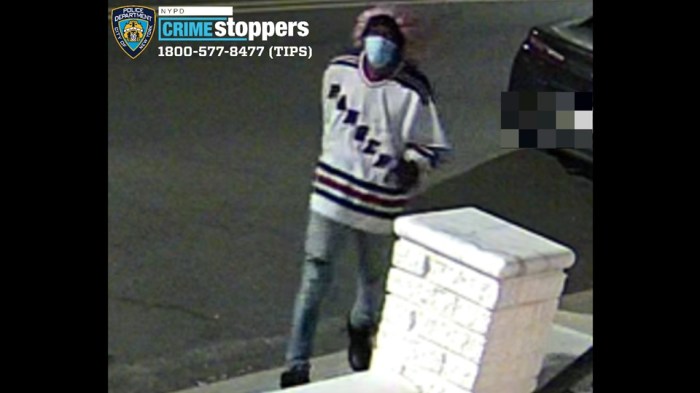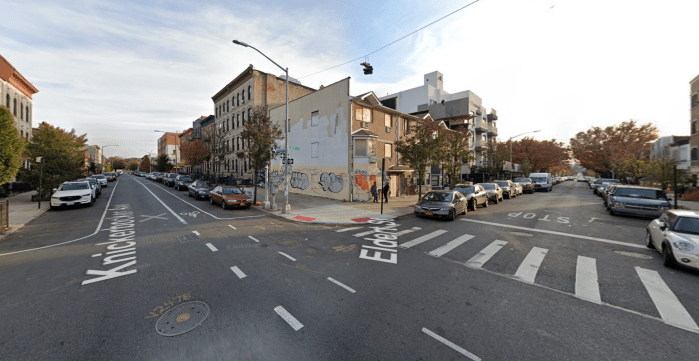By Terese Loeb Kreuzer
On Saturday, December 4, Trinity Church at Broadway and Wall Street will be in the spotlight when a crew from ABC Television films the church’s Lessons and Carols service for broadcast later in the month. Then people around the country will be able to glimpse Trinity and its boisterous past, going back more than 300 years.
The first Trinity Church building was consecrated in 1698 at the crest of what the sea-level town of New York might have regarded as a hill. The Anglican Church was erected with the assistance of the privateer and pirate Captain William Kidd, a friend of New York’s governor, Benjamin Fletcher. Captain Kidd provided the block and tackle with which to raise the stones of the modest structure, which was just inside the wall that the Dutch founders of the colony of Nieuw Amsterdam had built to keep the English out. However, when the English took over the colony in 1664 and renamed it New York they came by sea, not by land, and met with no resistance. The citizens just went about their usual business, which was making money. In 1699, the wall was taken down.
Today’s Trinity Church is the third on the Broadway/Wall Street site. The 1698 church burned down in the fire of September 21, 1776 that destroyed the western side of the city. Its successor had to be torn down when huge snowstorms in 1838 and 1839 irreparably damaged the roof. The present church, designed by Richard Upjohn in the neo-Gothic style, was consecrated in 1846. It was built of sandstone and contained some of the first stained glass windows in the United States, with panes emblazoned with pineapples, the traditional Colonial sign of “welcome.”
From the sculpted bronze doors at the entrance to the marble reredos behind the altar, Trinity exudes wealth, thanks in part to members of the Astor family. The massive doors, completed in 1896, were donated by William Waldorf Astor (at the time, the richest man in the United States), as a memorial to his father, John Jacob Astor III. The reredos, the ornamental wall behind the altar, was the gift of William Backhouse Astor, Jr. and John Jacob Astor III in memory of their father, William Backhouse Astor, Sr. It was dedicated with great fanfare on June 29, 1877 — an event that is memorialized on the sculpted doors now leading to the gift shop on the southern side of the building.
According to Trinity’s archivist, Gwynedd Cannon, at the time the reredos was dedicated, it was customary for the priests to pray with their backs to the congregation. “You’ll see Astor’s name carved [on the reredos],” she said. “To me that’s kind of funny because he’s from the halls of Mammon. It was almost as though [the priests] were praying to Astor.”
Trinity’s archives go back to the 1690s, Cannon said. They include the parish charter granted by King William III of England in 1697 and a land grant from England’s Queen Anne. In 1705, she gave Trinity land on the west side of Manhattan from Fulton Street to Christopher Street in order to provide some rental income for the struggling parish. Over the years, Trinity sold off much of the land but retained some of it. Several buildings near Canal Street have plaques indicating that they are owned by Trinity, and explaining why.
The Astors were the richest members of Trinity’s congregation but not the most politically and historically significant. The north churchyard, once the city’s public burial ground, is the site of the graves of two printers — English-born William Bradford (1663-1752) and German-born John Peter Zenger (1697-1746) — whose tussles with government helped establish freedom of the press in the United States. Some of the people in the graveyard are not as well known, but their tombstones reflect major events in the city’s history. The tombstone of two brothers, Peter and John Huggeford, both doctors who died within 17 days of each other in 1795, for instance, bears witness to the yellow fever epidemic that swept the city that year.
There are Revolutionary War soldiers in the graveyard, a signer of the Declaration of Independence, delegates to the Continental Congress and U.S. Congressmen and Senators. But towering over all, though his monument is far from the largest, is the memory of Alexander Hamilton (1757-1804), whose tomb in the south churchyard describes him as a patriot, solder and statesman and rightly says that his “talents and virtues will be admired by grateful posterity long after this monument shall have mouldered into dust.” Hamilton — aide-de-camp to General George Washington, first Secretary of the Treasury, founder of the Bank of New York, the U.S. Coast Guard and the New York Post, and architect of the financial system that established the credibility of the United States — was killed by Aaron Burr in a duel in July 1804.
Inside Trinity Church in what is called the “monument room” on the south side of the building is another testimonial to Hamilton created by his grief-stricken comrades in the Revolutionary War who called themselves The Society of Cincinnati — named for Lucius Quinctius Cincinnatus who, 2,500 years ago, left his farm to lead Rome when the city was invaded, and who resigned his office and returned to his farm when the crisis was over. George Washington was the first president of the society, and Hamilton, the second.
Across from the monument room, on the north side of the church is a small chapel — All Saints Chapel — where the Reverend Morgan Dix is buried. Reverend Dix (1827-1908) served as Trinity’s rector for 46 years. As the congregation grappled with whether it wanted to be “high church” and adhere to the imagery of Catholicism though not allegiance to the pope, or “low church” with less formality and ritualistic pomp, Reverend Dix came down on the side of “high church.” By the end of the 19th century, Trinity had decided in favor of “high church” but the fight was bitter.
The cenotaph of Rt. Reverend Benjamin T. Onderdonk (1791-1861), fourth bishop of New York, recalls that controversy. The bishop’s memorial, which flanks All Saints Chapel, looks like it could have come out of Westminster Abbey as he lies in state with an angel at his head and a lion at his feet. In fact, in 1845, the bishop was tried by the Episcopal Church’s governing body. He was accused of “immorality and impropriety” — groping and fondling a number of young women. He was convicted and suspended, though some people said the bishop was innocent and had been found guilty because of his high church sympathies. Trinity Parish supported him throughout his ordeal; as archivist Gynedd Cannon remarked, his memorial was tantamount to a public slap in the face to those who had opposed and condemned the bishop.
The Lessons and Carols service on December 4 will be very “high church” with lots of pageantry and singing. “Lessons and Carols is a beloved Anglican liturgy that traces the birth of the Messiah from prophecy to fulfillment in scripture and song,” Trinity says in a press release. “The tradition is based on an inspiring Christmas Eve service that began in England in the 1880’s. During the 1900’s, the service grew into a vibrant rite filled with music.”
Those who would like to participate should arrive at the church at 3:30 p.m. in “festive attire” for the taping.















